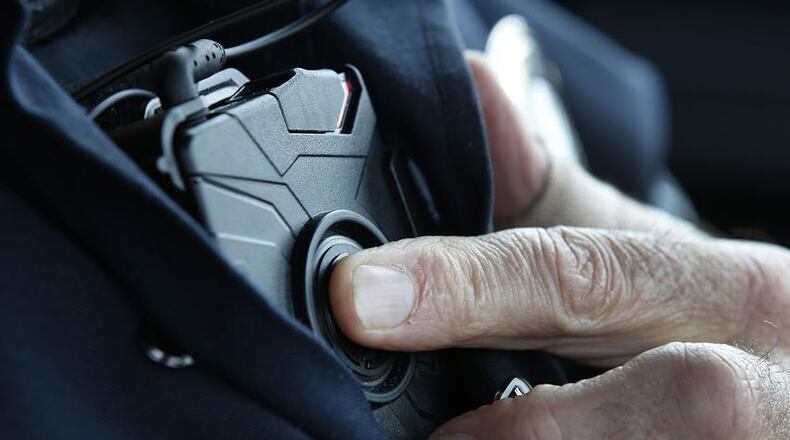The body camera system will cost about $200,000. The city council appropriated funds to the city’s police fund to pay for the new equipment.
The cameras will be able to record nine hours of footage continuously and store up to 32 gigabytes of data. The cameras will have built-in WiFi and built-in GPS.
“This will be good for video evidence when our officers respond to an incident, benefit an officer if there is a false complaint made against them and also benefit the public,” Lightner said.
MORE: Troopers seize $2.5M in marijuana products
Derrick Foward, president of the Dayton Unit of the NAACP, said that this is great first step toward transparency between citizens and law enforcement.
“We applaud them for that first step,” Foward said. “That was one of the points we made in our plan and we applaud them for taking it.”
One of the points in the Dayton NAACP's 8-point plan for improving law enforcement in Montgomery County was requiring front-facing cameras on all on-duty officers. The plan also requests that at least two cruiser cameras are utilized in every cruiser, with one facing the street and the other facing the person in custody.
Foward said he is meeting with all chiefs of police in Montgomery County later this week and it is “very encouraging” that Huber Heights made that decision going into that meeting.
Some groups and researchers say cameras don’t necessarily change how police behave and interact with the public and policies on their use tend to be very important.
Gary Daniels, chief lobbyist, with the ACLU of Ohio, said it’s not clear that body cameras actually benefit the larger community, even though many in law enforcement over time have warmed to the technology, believing video evidence would result in fewer bogus complaints of unnecessary force and could confirm their versions of events.
Of Ohio’s largest six cities, Dayton is the only one that has yet to provide officers with video cameras.
Huber Heights joins Trotwood, Tipp City, Xenia, the Greene County Sheriff's Office and the Clark County Sheriff's Office in getting their officers body cameras.
By 2016, nearly half of general-purpose U.S. law enforcement agencies had acquired body-worn cameras, according to data from the Bureau of Justice Statistics, and adoption of the technology continues to grow. Overwhelmingly, police agencies say they purchased the technology to improve officer safety, provide more evidence in cases and reduce civilian complaints and agency liability, the bureau’s survey found.
The Huber Heights police department currently uses the Watch Guard in-car camera system, so the department bought Watch Guard body cameras as well.
RELATED: Dayton is largest Ohio city without police body cameras
City Manager Rob Schommer said that the department has spent about a year and a half up-fitting the system and software to be able to house the new body cameras, which Schommer said are expected to last about five years.
The police department has determined that they need an additional person to handle video evidence requests from the body cameras.
Lightner said the department will order the cameras immediately. Officers will be equipped with body cameras after they undergo training.
Lightner did not have a timeline for when officers would start wearing body cameras.
About the Author

